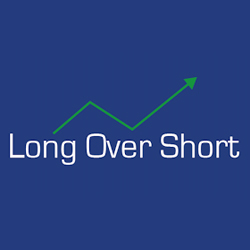I’ll use Piotroski’s nine variables to start the thinking about the potential for financial distress hitting Caffyns (LSE:CFYN).
- Is the company profitable?
In the year to March 2019 Caffyns made £0.952m profit after tax from continuing operations, therefore it gains a Piotroski point.
2. Does the company produce positive cash flow from operations?
In recent years Caffyns has generated satisfyingly positive cash flows. In the case of 2019 it produced £2.83m net cash flow from operating activities, thus a second Piotroski point is gained.
3. Has return on assets improved?
Net income before taking account of exceptional items in 2018 was £1.23m, but it was only £0.952m in 2019. Given that beginning of year total assets also rose we can say that the return on assets declined. No Piotroski point.
4. Is cash flow greater than profits?
Yes. The third point scored.
5. Has the ratio of long-term debt to average total assets during the year diminished?
For 2018: £13.5m/£87.113m = 15.5%
For 2019: £12.63m/£93.1m = 13.6%.
Yes, so a fourth Piotroski point.6
6. Has the current ratio improved?
Current assets divided by current liabilities.
2018: £44.024m/£39.657m = 1.11
2019: £47.2m/£44.9m = 1.05
There has been a deterioration, and so no point is scored.
7. Has the company raised cash by selling shares recently?
No, it has no need to. One Piotroski point scored.
8. Has the gross profit margin improved?
2018: GPM was 11.22%
2019: GPM was 12.4%
Sixth Piotroski point.
9. Has the ratio of turnover to total assets (at beginning of the year) improved?
2018: £215.868m/£83m = 2.6
2019: £209.246m/£91.4m = 2.29
There has been a decline, so no Piotroski point scored.
Conclusion on Piotroski
A score of six out of ten is good and does not signal much financial distress risk.
A closer look at Caffyn’s debt
Debt facilities have been agreed with HSBC and VW Bank:
- HSBC term loan with a current outstanding balance of £7.1m in March 2019 is repayable in instalments to 2038. Cost: 1.75% + LIBOR.
- HSBC revolving credit facility of £7.5m (1.8% + LIBOR), renewable in March 2023. Balance in March 2019: £4m.
- HSBC overdraft facility of £3.5m, renewable annually (1.75% + Bank rate)
- VW Bank overdraft facility of £7m renewable annually (2.64% + FHBR (currently 1%))
- VW Bank term loan, originally of £5m, repayable over 10 years to November 2023. 1.75% + FHBR. Balance outstanding March 2019 £2.4m.
HSBC and VW grant that in peak periods of the year the two overdrafts result in the combined total of £13m.
Debt outstanding March 2019 and March 2018
| £m | 2019 | 2018 | ||
| Current | 4.9 | 1.4 | ||
| Non-current | 12.6 | 13.1 | ||
| Total debt | 17.5 | 14.5 | ||
| Less cash | –3.9 | –2.2 | ||
| Net debt | 13.6 | 12.3 |
It would seem that the VW overdraft is asset-backed lending with cars being used a security. But the VW term loan and the HSBC debt, are subject to covenants tested with respect to:
- A debt to freehold property ratio, “The loan and overdraft facilities provided to the Company of £27.5 million (2018: £28.4 million) are secured by a general debenture and fixed charges over certain freehold properties……Capital requirements imposed externally by the Group’s bankers are that bank borrowings should not exceed 70% of the current open-market value of the Group’s freehold properties which are subject to a fixed charge.” (2019 Annual Report)
- An interest cover ratio. The details of this are not given but generally such clauses say something like annual profits (and/or cash flow) must be 2 or 3 times annual interest.
Significantly, “the failure of a covenant test would render these facilities repayable on demand at the option of the lenders.” (2019 Annual Report)
The no-deal Brexit scenario is a real concern here……To read more subscribe to my premium newsletter Deep Value Shares – click here http://newsletters.advfn.com/deepvalueshares/subscribe-1

 Hot Features
Hot Features













